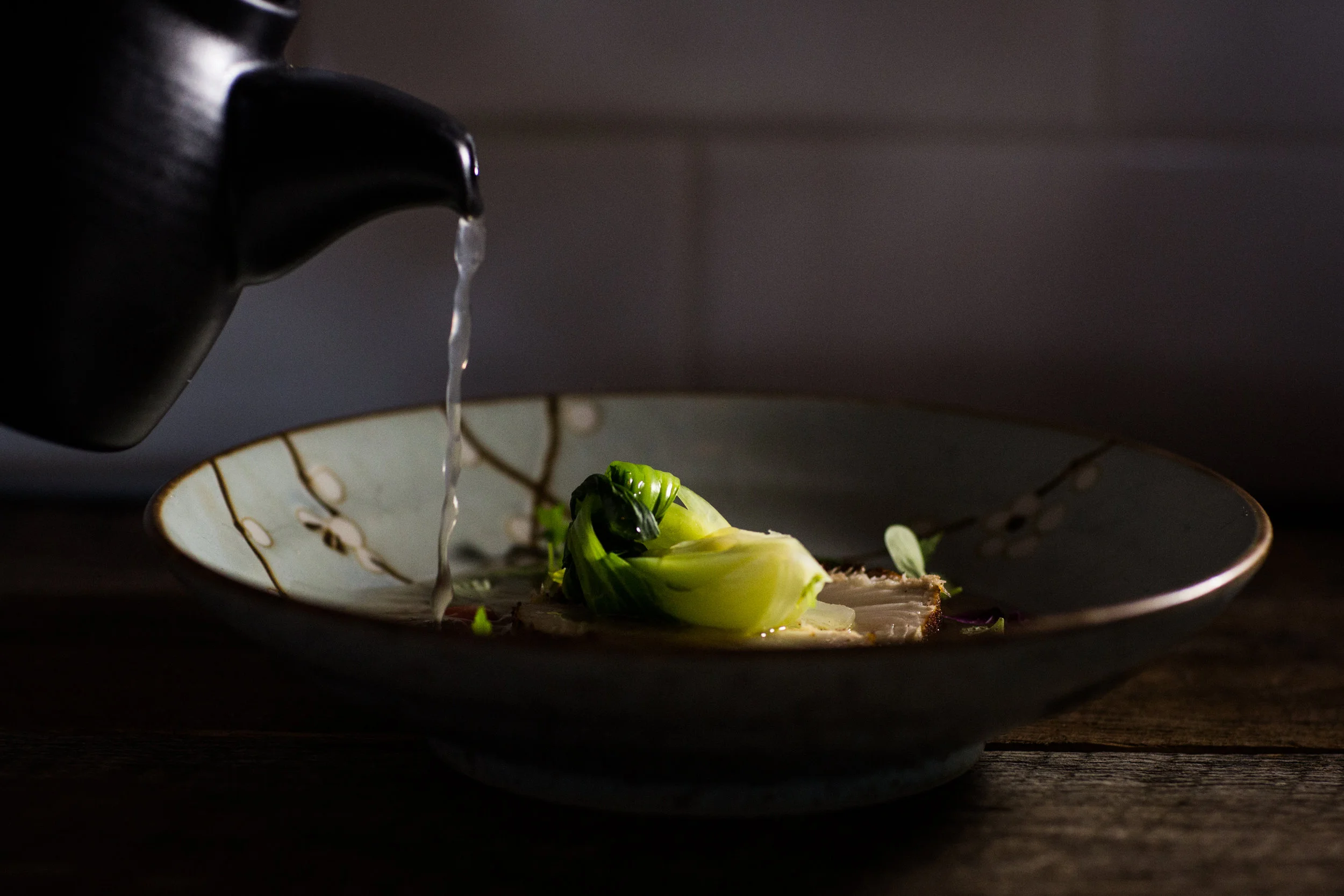Harvest
Using a harvesting method practiced for over 90 years, Japanese fishermen capture juvenile yellowtail (mojako) and then ranch the fish to maturation—this allows the fishermen to be sure that the fish are harvested during the correct season and the optimal flavor point (high fat, low moisture content).
Facility
Crown strives to keep their production as consistent as possible—this is accomplished through their premium location, with their production facility right next to the water. Fishermen bring their fish directly to the facility, minimizing any inconsistency in transport.
As fish are moved to the plant, they are in a state of excitement and stress, generating high levels of lactic acid in their bodies, which can have a negative effect on the end product. We ensure that all of our fish are kept in a holding tank with oxygenated seawater (150-160% normal Oxygen levels) for 10 to 16 hours prior to processing—this speeds up the reduction of lactic acid in the fish, creating the best-tasting hamachi possible.
Optimal Timing
Hamachi are generally considered to be "in season" from November through March, because in the spring and summer months the fish have spent all their energy producing eggs. Because of this, Crown harvests and processes fish during this optimal, winter seasonal period when the fish are at their largest size and have the most lipid content.
When compared to other sources of Hamachi, it can be seen that Crown fish have a significant advantage. Crown artesian suppliers provide fish that have lipid levels of 30%, as compared to those of farmed or wild suppliers which have lipid levels of 18%.
"Kun-Eki" Freshness
Previously, freshness in seafood had been determined by sensory assessments, such as the smell, color, touch, and taste. In Japan, the freshness of a fish has been boiled down to a science, precisely measuring nucleotides in the flesh. The freshness in fish tissue has been measured for over 50 years, based on the speed at which nucleotides in the fish degrade after death. The breakdown of complex molecules forms simpler ones, like fatty acids, nucleotides, and amino acids. Therefore, the measurement of these catabolites in the tissue can be used to measure quality parameters but also influence tissue taste and texture.
By prolonging the degradation of the flesh, we can ensure that our customers are receiving product that is at prime flavor.
Exclusive Methods
Blood is one of the first things to deteriorate and, because of this, can cause flesh to discolor and turn brown over time. With the patented Crown bleeding technology, we remove this factor by removing 99.9% of the blood before processing—resulting in improved smell and appearance.
Competitor products usually take anywhere from 12 to 36 hours to freeze. We freeze the product in less than one hour, ensuring that fish are frozen prior to rigor, at their peak flavor stage. This is due to our alcohol brine freezer (as compared to competitor air blast freezers). Through this marriage of centuries-old technique and modern technology, Crown is able to provide a superior product that is at its peak flavor and freshness.
The Crown Process in Motion






